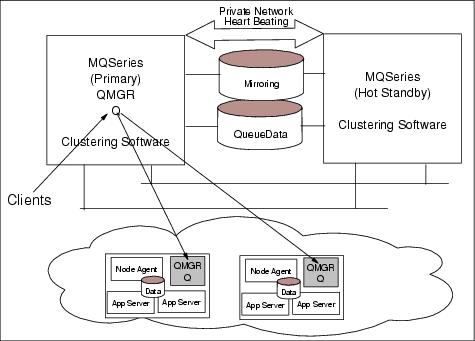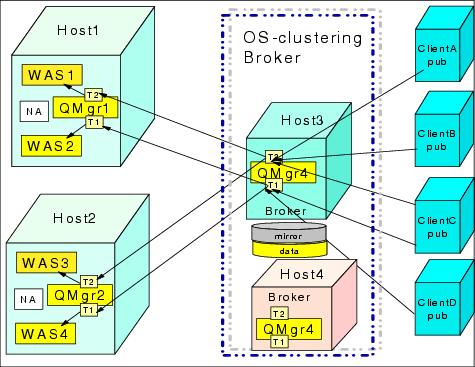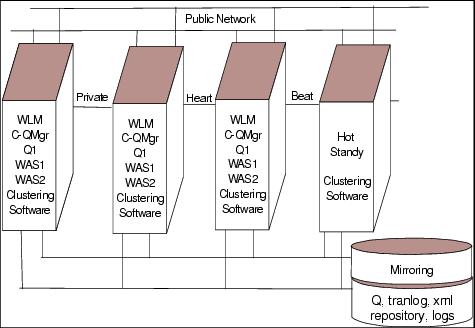Combined approaches for MQ built-in queue manager cluster and HACMP clustering
A WebSphere MQ cluster in conjunction with a WebSphere Network Deployment V5 cluster gives you the capability to protect messages from being lost. Messages will be kept safe and eventually processed with assured delivery. However, in real life, eventually is usually not good enough. Messages are often time-critical and need to be processed sooner rather than later, so the systems that process them must be highly available.
Some messages represent actions on a high-value commodity, with a rapidly changing price. An example of this is stock trading, where a message stuck in a dead system is a liability. Messages representing trade or other instructions in these commodities must be processed quickly or the trader risks loss. Therefore, we also need solutions to ensure timely processing of time-critical messages by appservers in case of queue manager failures. The combined OS-clustering and MQ clustering can resolve this problem.
Figure 11-13 illustrates a system HA system that contains both the WebSphere MQSeries built-in queue cluster and HACMP-based clustering for messaging scalability and higher level availability.

Figure 11-13 Combined WebSphere MQ Queue Manager clustering and hardware-based (HACMP, ...) clustering
The publish/subscribe broker is a SPOF. If the broker fails, no messages are available to be processed by the clustered appservers. We can use OS-clustering to ensure the high availability of the broker, as shown in Figure 11-14.

Figure 11-14 Clustering publish/subscribe broker
OS-clustering can be extended to all WebSphere MQ clustered managers, as shown in Figure 11-15. All clustered queue managers and queues share a common storage that is RAID protected or a mirrored disk array. Queue and log data are stored in such highly available shared disk arrays. When any queue manager or host or network fails, the queue manager will be restarted automatically in another healthy host with the same data and log files so that the messages can be processed timely by the appservers.

Figure 11-15 Combined: OS-clustering with MQ cluster
Various clustering techniques can be further extended and merged into a big cluster mix that ensures the highest availability and scalability, as shown in Figure 11-16. Here, an IBM WAS Network Deployment V5.1 application server cluster, a WebSphere MQ cluster, and OS-clustering are coming together to ensure timely processing of messages, transaction log high availability, Deployment Manager high availability, and many other issues.

Figure 11-16 Combination of all clustering options
WebSphere is a trademark of the IBM Corporation in the United States, other countries, or both.
IBM is a trademark of the IBM Corporation in the United States, other countries, or both.